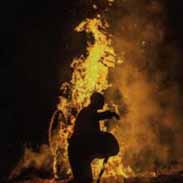Atomic Mass Units Flashcards, test questions and answers
Discover flashcards, test exam answers, and assignments to help you learn more about Atomic Mass Units and other subjects. Don’t miss the chance to use them for more effective college education. Use our database of questions and answers on Atomic Mass Units and get quick solutions for your test.
What is Atomic Mass Units?
Atomic mass units (AMUs) are a unit of measurement used in chemistry to express the relative masses of atoms and molecules. This is an important concept because it allows scientists to compare different elements and compounds, and accurately measure their properties such as density, boiling point, melting point and reactivity.The AMU is defined as exactly one-twelfth the mass of a single atom of carbon-12. Carbon-12 was chosen since it has the smallest atomic number, meaning that all other atoms have larger numbers than this element. Therefore, using carbon-12 as a base makes sense when comparing the relative sizes of different substances. All other atomic weights can then be expressed relative to this standard. For example, oxygen has an Atomic Mass Unit (AMU) value of 15.9994 grams per mole while hydrogen’s AMU value is 1 gram per mole; thus indicating that oxygen has approximately 16 times more mass than hydrogen does on average. With this information we can understand how two elements will interact with each other based on their respective masses without having to know the exact weight values for either element or compound involved in the reaction or interaction process. In addition to aiding scientists in determining reactions between various compounds, knowing an object’s AMU value also helps scientists identify unknown particles within sample materials by measuring their absolute size against known objects’ sizes through spectroscopic analyses such as infrared absorption spectroscopy or emission spectroscopy technologies amongst others which allow for precise identification processes at molecular levels within laboratory settings today. Overall, Atomic Mass Units are fundamental building blocks for understanding chemical reactions between individual elements and molecules by providing an easy way to determine what type of reaction will occur between them given their relative weights compared to each other along with helping us identify unknown particle samples from test material via modern technology applications like spectroscopy techniques mentioned above allowing us greater insights into chemical processes occurring around us everyday.














